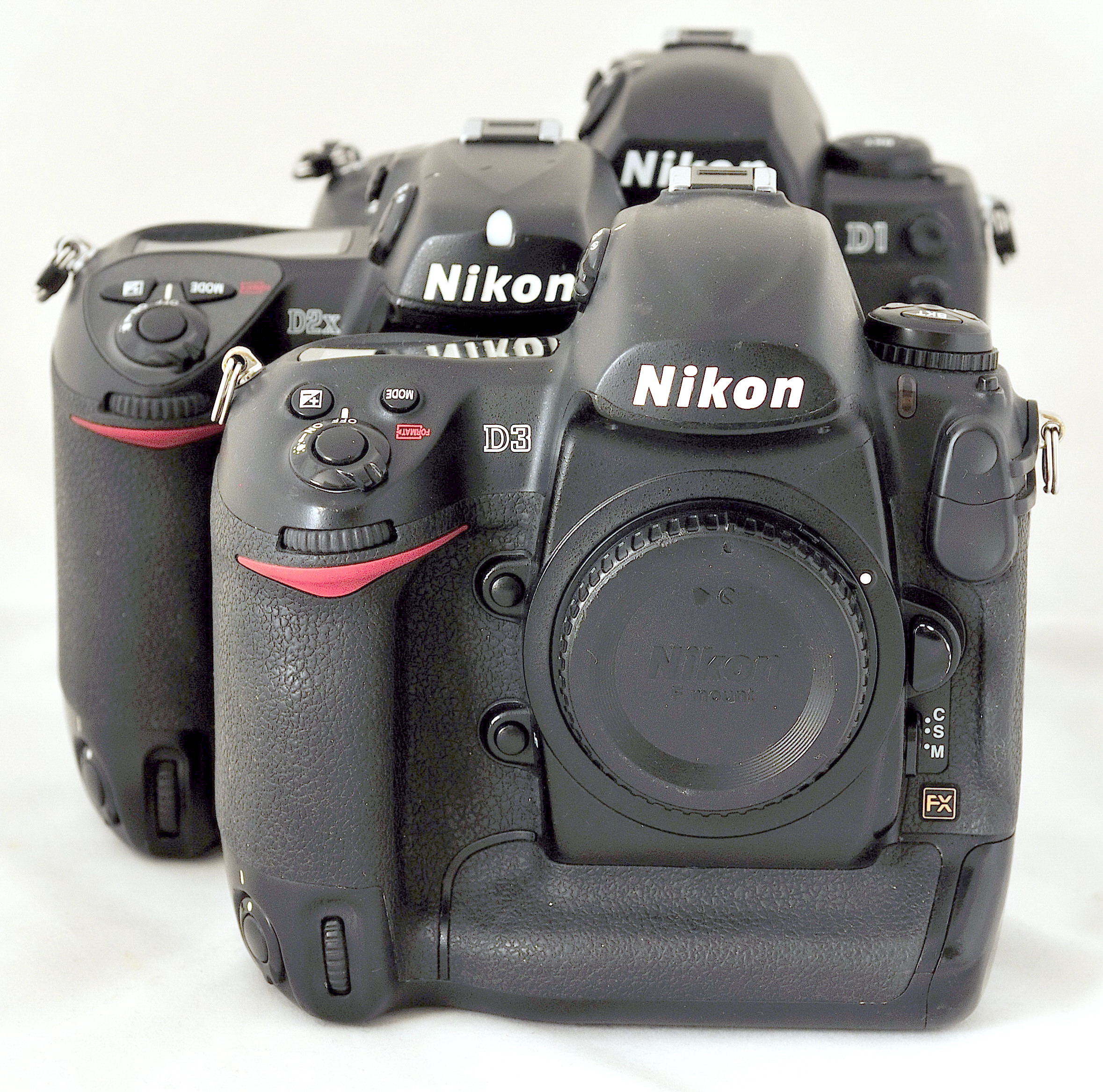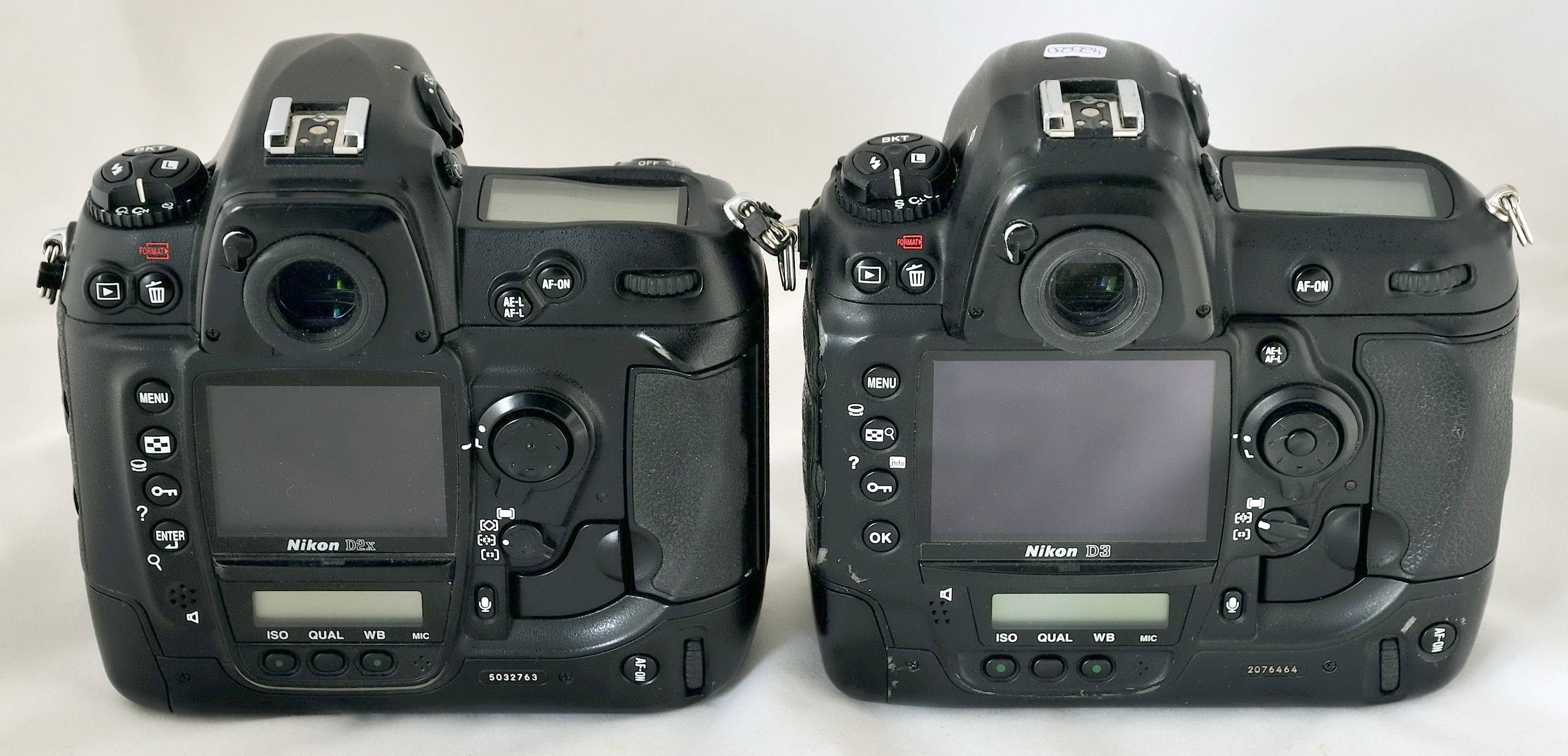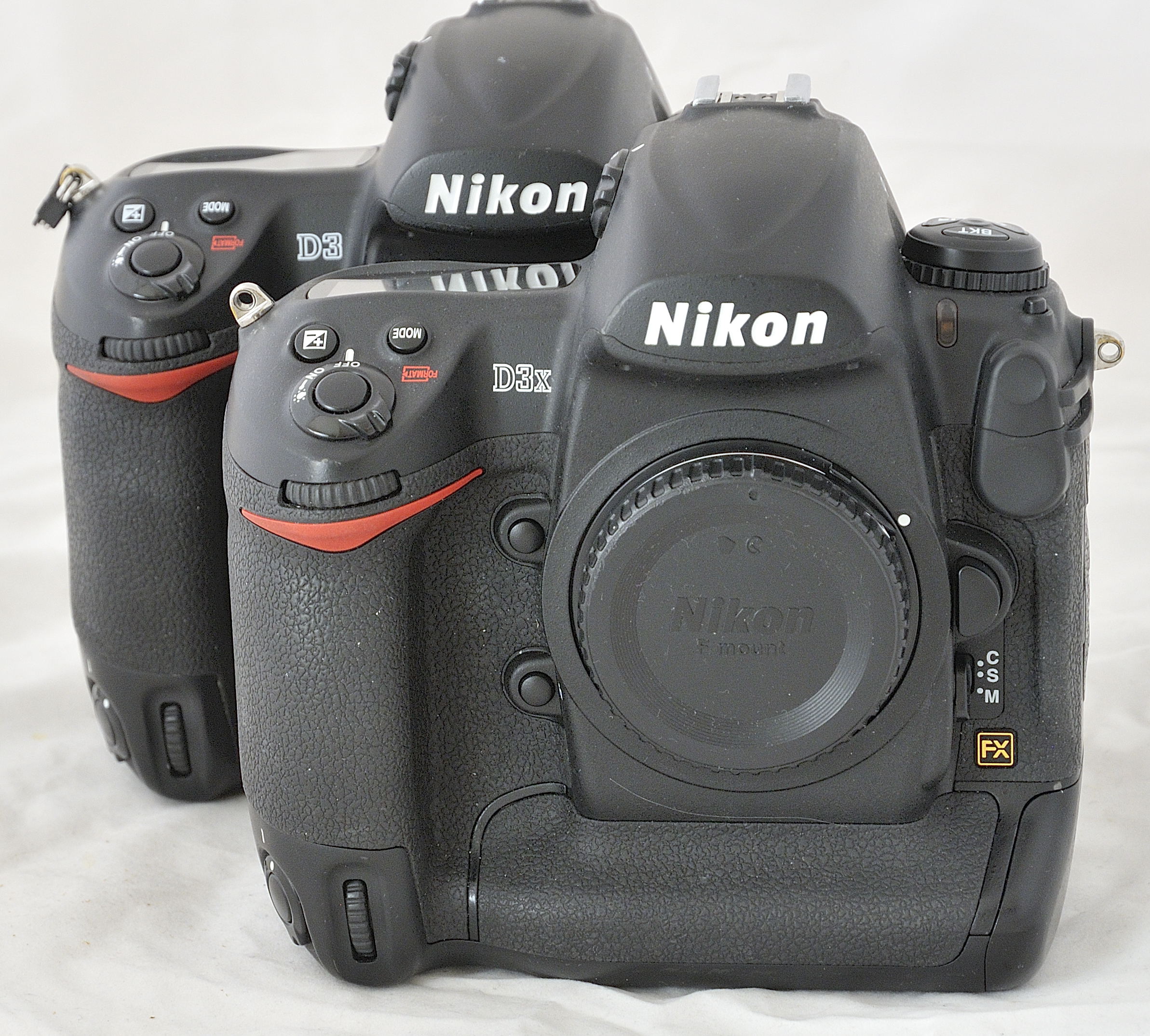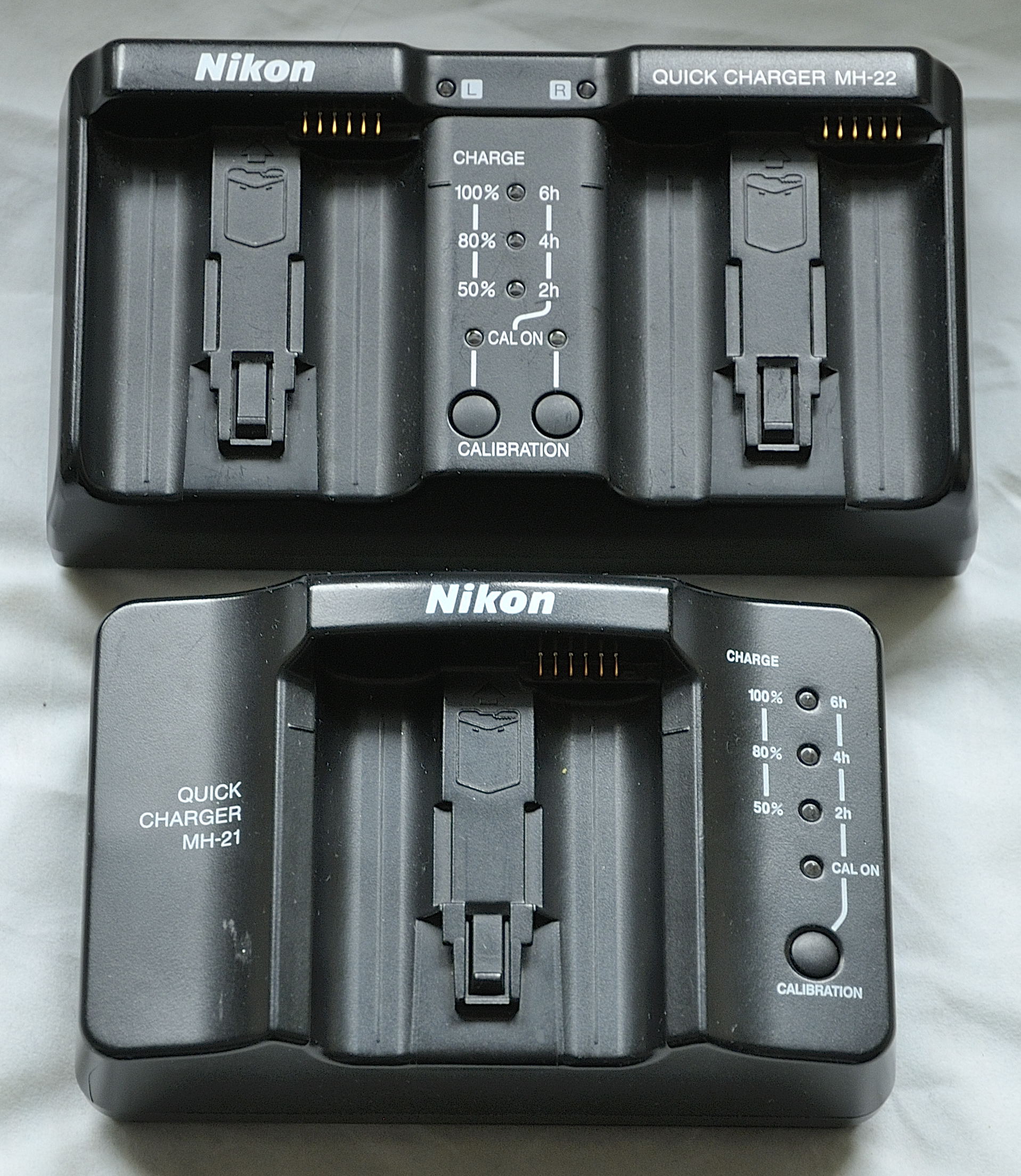Nikon D3 - D3X - D3S
Nikon surprised the world in late 2007 with this very up-to-date ´image machine´. Nikon´s competitor and rival Canon already had a camera with full frame (24 x 36mm. frame size) sensor. Nikon always confirmed that it was examining a full frame, but denied to take one into production. ´As the market asked for it´, Nikon decided finally to introduce a FX-size (36x23.7mm.) CMOS-sensor, too. This fast camera with a nearly identical body has a FX-sensor with 12.4 Mp, thus all older MF- and AF-lenses will keep their focal length; the D1- and D2-series have a crop factor of 1.525. The Nikon D3 is a great step forward in comparison to the D2-series. Apart from the format its speed and its capability to offer very nice images at ISO-rates up to iSO 6400! (see image below) is a real revolution.
The lay-out of the D2- and D3-series is nearly the same. For the D2- and D3-series many accessories have been made (and not only by Nikon). All versions can be connected to GPS-instruments, (wireless) to printers, laptops, remote control equipment, etc. For technical specifications see the matrix. Note: In January 2009 Nikon Corporation issued a firmware upgrade for the Nikon D3. In January 2010 there has been issued a firmware upgrade for the Nikon D3 (2.02) and D3X (B: 1.01). For both Windows and MacIntosh. Ask your dealer or Nikon representation in your country for more details. Later firmware upgardes can be find in the relevant chapter. All three series of professional cameras (Nikon D1 - D2 and D3 series) are strong work horses. They are able to resist tough handling in various weather conditions. Photographers with a lot of old Nikkor lenses (preferably the AIS- or AF-lenses) can use them on all models. Lenses with large rear lenses (Noct-Nikkor 1.2/58mm, Nikkor 1.4/85mm, etc.) may have problems with reflections between the rear lens and the sensor. Older (non-DX) flashes may not be able to perform all functions, as the sensor in the camera doesn´t reflect light like a film does. DX-flashes have a built-in sensor to measure the needed dose of light. Finally all rubber body covers are coming easy off the body. For the D1-series there are spare rubbers for sale, all other models need a new door! In general digital photography is still in its infancy. If we look at the developments of the last 10 years enormous progress has been made. Sensor production, image sharpness, color management and data processing has improved undeniably. Fighting negative side effects like banding and noise in digital images has been successful. Below a (unprocessed) picture taken with a Nikon D3 at 6400 ISO without noise reduction. An achievement which probably wouldn´t be possible with any modern 35 mm. film.
Picture taken with Nikon D3 + AF-DC-Nikkor 2/135mm. at JPEG Basic (1280x852) 8 bit, at 1/800 sec + f/2.8, aperture priority, multi-pattern metering mode and -1 exposure compensation at 6400 ISO. (courtesy Jan Prinsen) Nikon Corporation certainly runs in front with respect to developments in digital photography. Started with the legendary Nikon F in 1959 up to the Nikon F6 in 2004 Nikon has proved to be able to create - within a period of 50 years - an almost perfect 35mm.-film single lens reflex camera. In 1999 the first digital reflex camera was introduced. The assumption that we have to wait another 50 years to see the almost perfect digital Nikon SLR is unlikely. The series of Nikon's professional digital single lens reflex cameras consists - traditionally - of two versions: a Nikon D?X and D?H. It is therefore that Nikon introduced a Nikon D3X on December 1, 2008. Nikon wanted to introduce this flagship earlier, but had to wait for Sony - being the manufacturer of the very high resolution sensor - that introduced its flagship with the 24+ Mp. sensor at the 2008 Photokina in Germany.
The Nikon D3X has a full-frame (FX) sensor (35.9 x 24mm.) with a resolution of 24.5 Mp. A lot of features are identical to those offered by the Nikon D3, including live view. ISO settings are from 100-1600 with a possibility to under- and override this by 2EV. Colours can be saved at 16 bit depth. However! A serious deception is its speed. Nikon promises 7 fps, but at ISO-100 at high shutter speeds and in FX-mode, RAW+jpeg back up the camera 'masters' just ONE frame per second!! Only in Jpeg basic the camera is able to run 4 fps! In DX-crop mode it masters 6 fps. at Jpeg basic, only! For professional shooters this relatively expensive camera is a great disappointment. Even at his high ISO-mode the camera is disappointing. The promised plus in resolution is - compared with the D3 - less than expected. At 100% crop the differences are marginal. Many photogrpahers have to sent each image through image improvement software to get a decent picture. An upgrade from the D3 to the D3X is a waste of money, for those with a limited budget. Mid October 2009 Nikon introduced an expected development of the D3-series as the Nikon D3S ! This camera has a full-frame (FX) 12.1 Mp. CMOS-sensor with a sensitivity equivalent to 200 up to 12,800 ISO. This even can be expanded to an amazing (but theoretical) 102,400 ISO (in HI-3)!! Which is an absolute record! In FX-format the camera is able to make 9 frames per second and in DX-format even 11 fps. In addition to shooting (still) images, making movies (in HD-quality! and stored in Mpeg) is possible as well. New are an added image area of 1,2 x crop (30 x 20) format with approx. 8.4 Mp., an electronic virtual horizon that is available in Live View shooting and an image sensor cleaning function. If you are a movie maker the D3S is your camera. If you are a photographer stick to your D3 and forget the rest or go for a D4 or later SLR. More details of these cameras in the matrix. Serial numbers of the above mentioned cameras started at: Nikon D3 #2xxxxxx; Nikon D3S #2xxxxxx; Nikon D3X #5xxxxxx. Production of the cameras ceased by 2012. Production totals (estimates) D3: close to 100,000; D3S: 60,000; D3X: 40,000.
Above the Nikon MH-21 and Nikon MH-22 chargers. Be aware of the fact that the Nikon MH-22 charger does NOT charge two batteries simultaneously! After one battery has been fully charged or calibrated, number two will be chrged! Critical note: the speed of innovative developments in digital photography is bringing many photographers is great financial problems. Late 2007 the Nikon D3 was introduced: a very nice but also expensive camera, followed 13 months later by its successor the Nikon D3X, 10 months later followed by the Nikon D3S. Investing in a professional tool has become a gamble as camera dealers do not give much for e.g. a used Nikon D2X when trading-in. The Nikon D3S doesn't make - however - a Nikon D3 obsolete!
|




